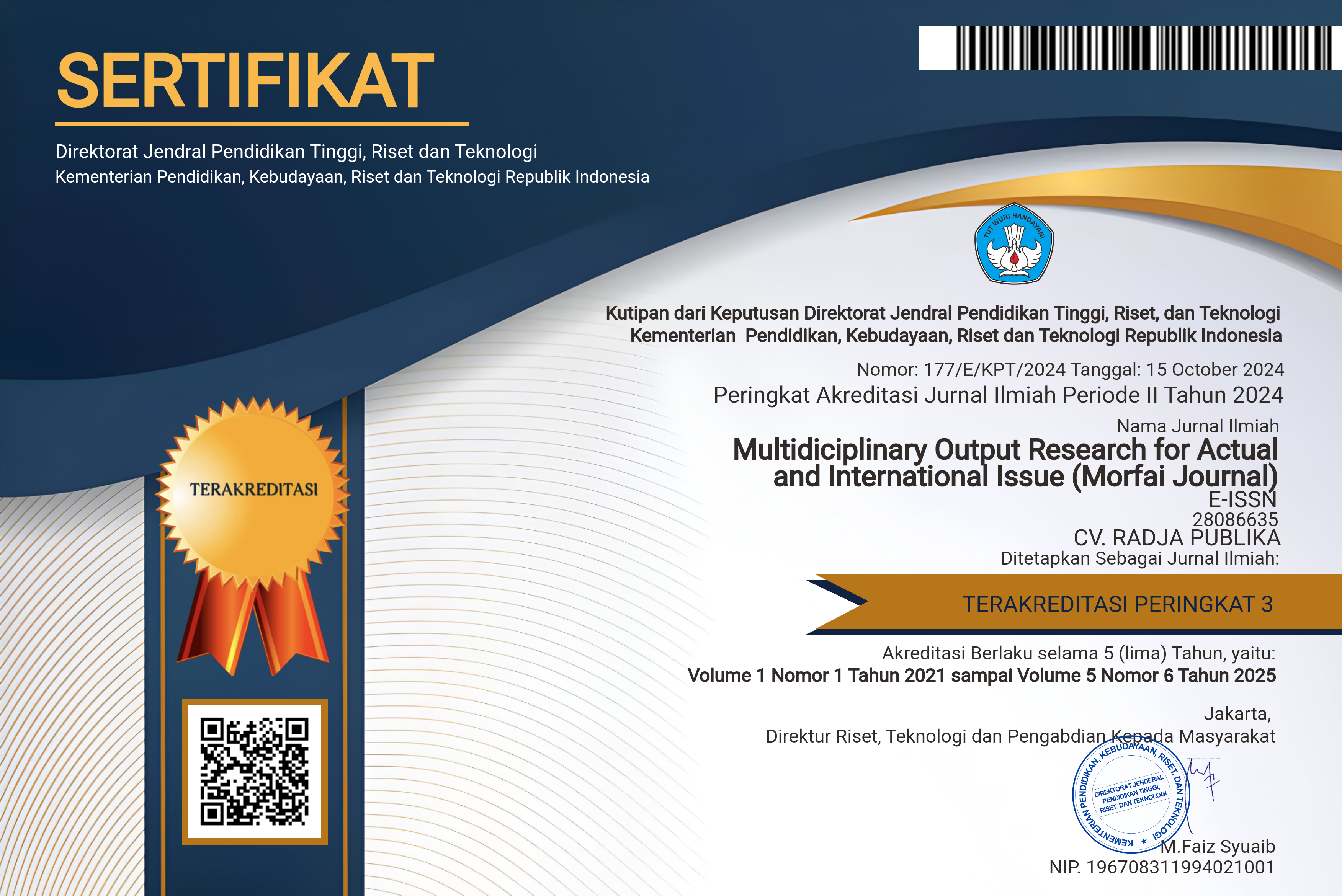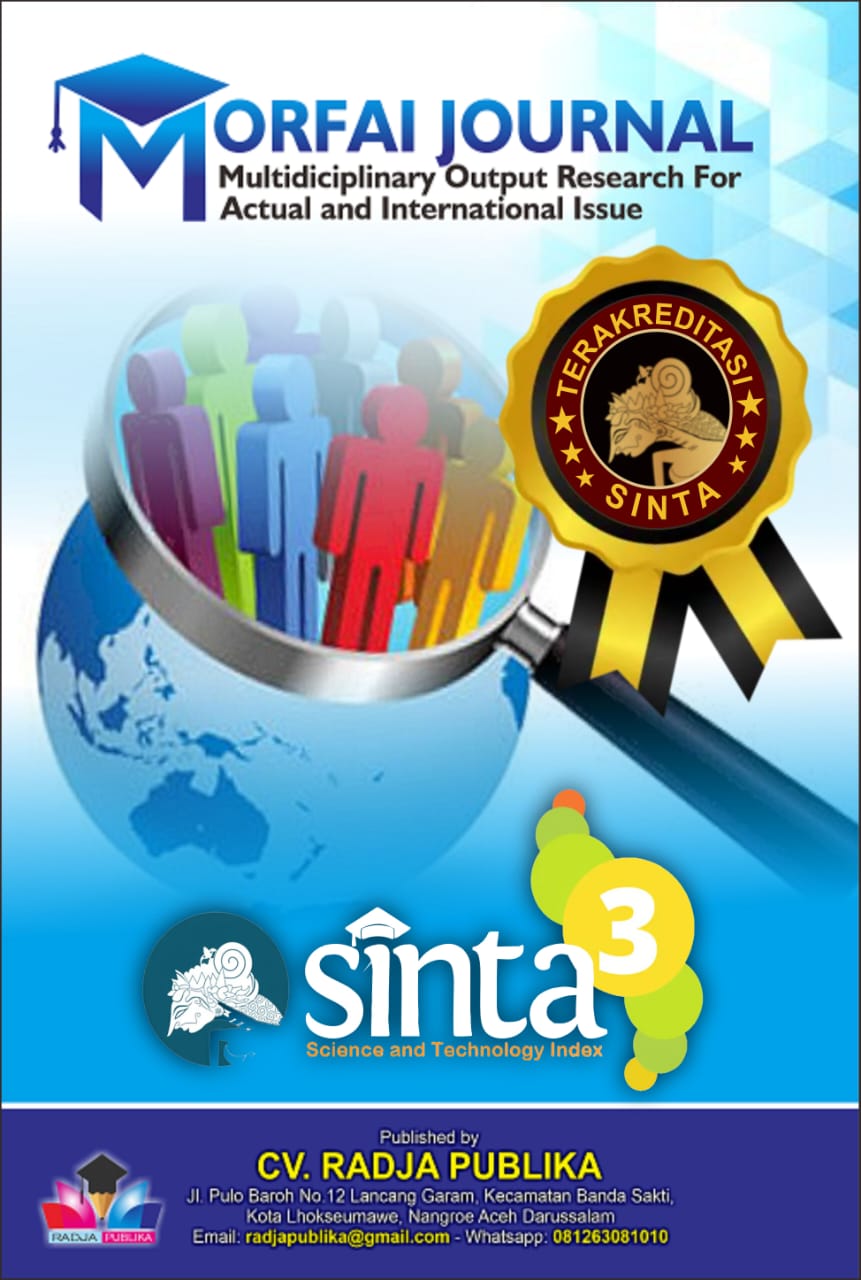DECOMPOSITION ANALYSIS OF CO2 EMISSION IN INDONESIA’S ENERGY-INTENSIVE INDUSTRIES
Main Article Content
Andri Febriyanda
Deni Kusumawardani
Muhammad Adnan
The growth of the industrial sector through industrialization greatly affects the increase in CO2 emissions. Energy conservation and diversification policies need to be carried out to reduce CO2 emissions, especially in energy-intensive industries. This study aims to decompose and analyze the factors that cause changes in CO2 emissions using the LMDI method. The data used in this study was sourced from large and medium industry surveys during the period 2010-2015. The results show that the effects of changes in economic activity, industrial economic structure and energy intensity are the main factors that contribute to the increase in CO2 emissions in the cement, food, pulp & paper, chemical and textile industries. The structural effects of energy composition and emission coefficients have not shown a significant contribution to the increase or decrease of CO2 emissions. Policy recommendations to reduce CO2 emissions in energy-intensive industries are to encourage energy efficiency and transition through the use of energy-saving and low-carbon technologies, as well as revitalize old and inefficient technologies.
Ali, M. U., Gong, Z., Ali, M. U., Wu, X., & Yao, C. (2021). Fossil Energy Consumption, Economic Development, Inward FDI Impact on CO2 Emissions in Pakistan: Testing EKC hypothesis through ARDL model. International Journal of Finance & Economics, 26(3), 3210–3221. https://doi.org/10.1002/IJFE.1958
Ang, B. W. (2004). Decomposition Analysis for Policymaking in Energy: Which is the Preferred Method? Energy Policy, 32(9), 1131–1139. https://doi.org/10.1016/S0301-4215(03)00076-4
Anwar, N., & Elfaki, K. E. (2021). Examining the Relationship Between Energy Consumption, Economic Growth and Environmental Degradation in Indonesia: Do Capital and Trade Openness Matter? International Journal of Renewable Energy Development, 10(4), 769–778. https://doi.org/https://doi.org/10.14710/ijred.2021.37822
Barbhuiya, S., Bhusan Das, B., & Adak, D. (2024). Roadmap to a Net-zero Carbon Cement Sector: Strategies, Innovations and Policy Imperatives. Journal of Environmental Management, 359, 121052. https://doi.org/10.1016/J.JENVMAN.2024.121052
Bradshaw, M. J. (2010). Global Energy Dilemmas: A Geographical Perspective. The Geographical Journal, 176(4), 275–290. https://doi.org/10.1111/J.1475-4959.2010.00375.X
Budiono, H. D. S., Nurcahyo, R., & Habiburrahman, M. (2021). Relationship Between Manufacturing Complexity, Strategy, and Performance of Manufacturing Industries in Indonesia. Heliyon, 7(6), e07225. https://doi.org/10.1016/J.HELIYON.2021.E07225
Carmona, M. J. C., & Collado, R. R. (2016). LMDI Decomposition Analysis of Energy Consumption in Andalusia (Spain) During 2003–2012: the Energy Efficiency Policy Implications. Energy Efficiency, 9, 807–823. https://doi.org/https://doi.org/10.1007/s12053-015-9402-y
Climate Watch. (2024). Climate Watch. Retrieved October 28, 2024, from https://www.climatewatchdata.org/about/description
Diakoulaki, D., & Mandaraka, M. (2007). Decomposition Analysis for Assessing the Progress in Decoupling Industrial Growth from CO2 Emissions in the EU Manufacturing Sector. Energy Economics, 29(4), 636–664. https://doi.org/10.1016/J.ENECO.2007.01.005
Duran, E., Aravena, C., & Aguilar, R. (2015). Analysis and Decomposition of Energy Consumption in the Chilean Industry. Energy Policy, 86, 552–561. https://doi.org/10.1016/J.ENPOL.2015.07.033
Harahap, N. A. P., Qadri, F. Al, Harahap, D. I. Y., Situmorang, M., & Wulandari, S. (2023). Analisis Perkembangan Industri Manufaktur Indonesia. El-Mal: Jurnal Kajian Ekonomi & Bisnis Islam, 4(5), 1444–1450. https://doi.org/10.47467/ELMAL.V4I5.2918
Hartono, D., Irawan, T., & Achsani, N. A. (2011). An Analysis of Energy Intensity in Indonesian Manufacturing. International Research Journal of Finance and Economics, 62, 77–84. Retrieved from https://scholar.ui.ac.id/en/publications/an-analysis-of-energy-intensity-in-indonesian-manufacturing
International Energy Agency. (2019). CO2 Emissions from Fuel Combustion 2019. https://doi.org/https://doi.org/10.1787/2a701673-en
IPCC. (2006). Guidelines for National Greenhouse Gas Inventories. Intergovernmental Panel on Climate Change.
Kahouli, B., Miled, K., & Aloui, Z. (2022). Do Energy Consumption, Urbanization, and Industrialization Play a Role in Environmental Degradation in the Case of Saudi Arabia? Energy Strategy Reviews, 40, 100814. https://doi.org/10.1016/J.ESR.2022.100814
Liu, Z., Davis, S. J., Feng, K., Hubacek, K., Liang, S., Anadon, L. D., … Guan, D. (2015). Targeted Opportunities to Address the Climate–trade Dilemma in China. Nature Climate Change 2015 6:2, 6(2), 201–206. https://doi.org/10.1038/nclimate2800
Martínez-Zarzoso, I., & Maruotti, A. (2011). The Impact of Urbanization on CO2 Emissions: Evidence from Developing Countries. Ecological Economics, 70(7), 1344–1353. https://doi.org/10.1016/J.ECOLECON.2011.02.009
Martinho, V. J. P. D. (2016). Energy Consumption Across European Union Farms: Efficiency in Terms of Farming Output and Utilized Agricultural Area. Energy, 103, 543–556. https://doi.org/10.1016/J.ENERGY.2016.03.017
MEMR. (2016). Indonesia Energy Outlook.
Meng, M., Fu, Y., & Wang, X. (2018). Decoupling, Decomposition and Forecasting Analysis of China’s Fossil Energy Consumption from Industrial Output. Journal of Cleaner Production, 177, 752–759. https://doi.org/10.1016/J.JCLEPRO.2017.12.278
Nair, M., Arvin, M. B., Pradhan, R. P., & Bahmani, S. (2021). Is Higher Economic Growth Possible Through Better Institutional Quality and a Lower Carbon Footprint? Evidence From Developing Countries. Renewable Energy, 167, 132–145. https://doi.org/10.1016/J.RENENE.2020.11.056
Peraturan Presiden Nomor 61 Tahun 2011 Tentang Rencana Aksi Nasional Penurunan Emisi Gas Rumah Kaca (GRK). Indonesia.
Ponce, P., & Khan, S. A. R. (2021). A Causal Link Between Renewable Energy, Energy efficiency, Property Rights, and CO2 Emissions in Developed Countries: A Road Map for Environmental Sustainability. Environmental Science and Pollution Research, 28, 37804–37817. https://doi.org/https://doi.org/10.1007/s11356-021-12465-0
Putri, E. P., Chetchotsak, D., Ruangchoenghum, P., Jani, M. A., & Hastijanti, R. (2016). Performance Evaluation of Large and Medium Scale Manufacturing Industry Clusters in East Java Province, Indonesia. International Journal of Technology, 7(7), 1269–1279. https://doi.org/https://doi.org/10.14716/ijtech.v7i7.5229
Rosita, T., Zaekhan, Estuningsih, R. D., & Widharosa, N. (2021). Does Energy Efficiency Development in Manufacturing Industry Decouple Industrial Growth from CO2 Emissions in Indonesia? International Journal of Environmental Studies, 78(4), 573–587. https://doi.org/10.1080/00207233.2020.1811575
Su, M., Wang, S., Li, R., & Guo, N. (2020). Decomposition Analysis of the Decoupling Process Between Economic Growth and Carbon Emission in Beijing City, China: A Sectoral Perspective. Energy and Environment, 31(6), 961–982. https://doi.org/https://doi.org/10.1177/0958305X19882402
Suparmoko, M. (2015). Ekonomi Sumber Daya Alam dan Lingkungan Suatu Pendekatan Teoritis. Yogyakarta: PT. BPFE.
Tadjoeddin, M. Z. (2016). Productivity, Wages and Employment: Evidence from the Indonesia’s Manufacturing Sector. Journal of the Asia Pacific Economy, 21(4), 489–512. https://doi.org/10.1080/13547860.2016.1153227
Tu, M., Li, Y., Bao, L., Wei, Y., Orfila, O., Li, W., & Gruyer, D. (2019). Logarithmic Mean Divisia Index Decomposition of CO2 Emissions from Urban Passenger Transport: An Empirical Study of Global Cities from 1960–2001. Sustainability, 11(16), 4310. https://doi.org/10.3390/SU11164310
Wang, H., Ang, B. W., & Su, B. (2017). Assessing Drivers of Economy-wide Energy Use and Emissions: IDA versus SDA. Energy Policy, 107, 585–599. https://doi.org/10.1016/J.ENPOL.2017.05.034
Wang, M., & Feng, C. (2017). Decomposition of Energy-related CO2 Emissions in China: An Empirical Analysis Based on Provincial Panel Data of Three Sectors. Applied Energy, 190, 772–787. https://doi.org/10.1016/J.APENERGY.2017.01.007
Wang, S., Li, Q., Fang, C., & Zhou, C. (2016). The Relationship Between Economic Growth, Energy Consumption, and CO2 Emissions: Empirical Evidence from China. Science of The Total Environment, 542, 360–371. https://doi.org/10.1016/J.SCITOTENV.2015.10.027
Wu, Y., Zhu, Q., & Zhu, B. (2018). Decoupling analysis of world economic growth and CO2 emissions: A study comparing developed and developing countries. Journal of Cleaner Production, 190, 94–103. https://doi.org/10.1016/J.JCLEPRO.2018.04.139
Xin, L., Jia, J., Hu, W., Zeng, H., Chen, C., & Wu, B. (2021). Decomposition and Decoupling Analysis of CO2 Emissions Based on LMDI and Two-Dimensional Decoupling Model in Gansu Province, China. International Journal of Environmental Research and Public Health, 18(11), 6013. https://doi.org/10.3390/IJERPH18116013
Zaekhan, Nachrowi, D. N., Hartono, D., & Rosita, T. (2022). What Drivers the Decoupling of CO2 Emissions in the Indonesian Manufacturing Industry? An Analysis of Firm Level Factors. International Journal of Sustainable Energy, 41(6), 538–555. https://doi.org/10.1080/14786451.2021.1945602
Zhang, M., Liu, X., Wang, W., & Zhou, M. (2013). Decomposition analysis of CO2 emissions from electricity generation in China. Energy Policy, 52, 159–165. https://doi.org/10.1016/J.ENPOL.2012.10.013









